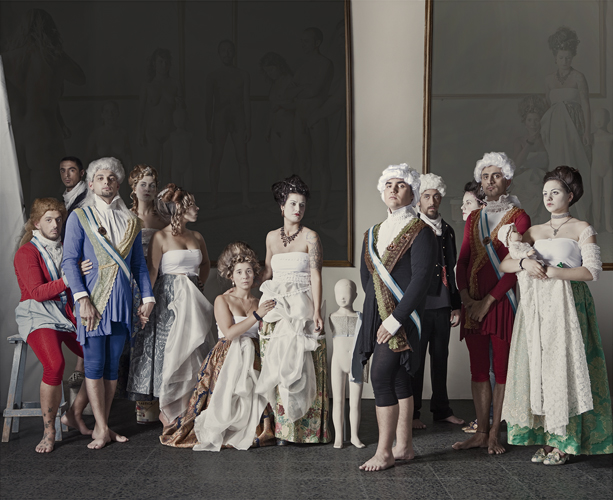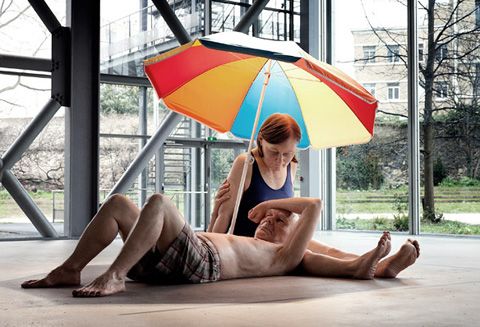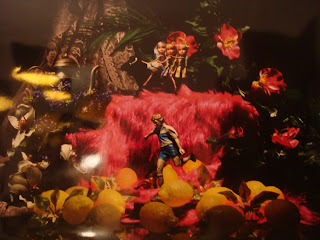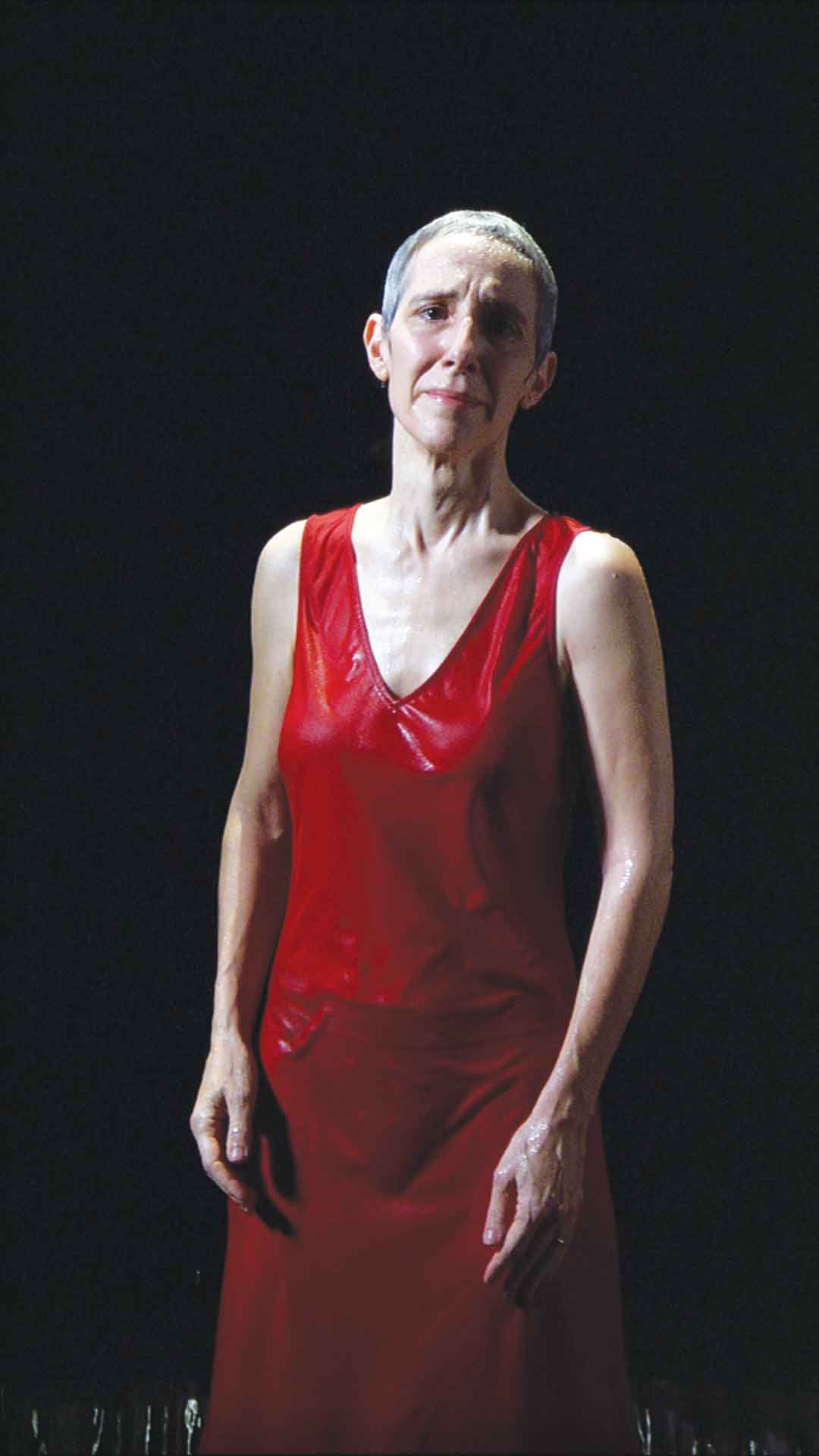Carlos IV's family
The family of Charles IV, as we know them, masterfully depicted by Goya in 1800 represents the height of the spanish bourgeoisie, the royal family, in a convulsive time for spain in the early nineteen century. This brutally shocking image by the whole history that carries in itself, after more than 200 years serving as a reference to the photographer Juanra Garcia, which deals the painting of the "aragones" genius from the more impertinent and transgressive aspect approaches all senses.
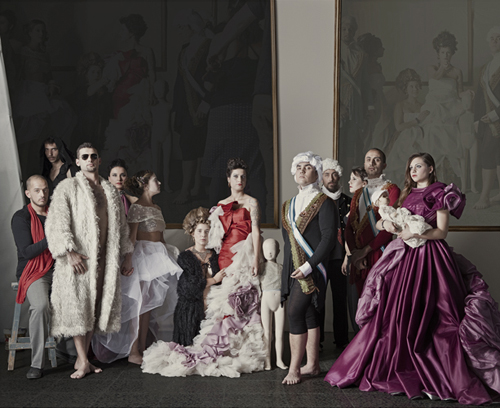
Iconographically speaking Carlos IV 's family has been the subject of multiple studies about the desires, wills and longing from each of the members of this unique family. Juanra Garcia comes to the painting and threshes in a series consisting of fourteen extraordinary photos. His work is more a iconological study than iconographic, putting in jeopardy the values of the bourgeoisie and the family as we have never seen it before.
Through images, we are entering in a world without qualm or false truths, the protagonists are divesting themselves of the clothes little by little and with it any prejudice established in regard to the family system. If it is true that each of the components of the group maintains that gaze and pose both hieratic and cold that we sensed in Goya's painting, in this case actually become challenging. the use of various costumes and items, which are not mere objects, being the way as the photographer treats them become symbols that acquire a vital importance by giving to the work of glamour, warmth or vividness, shaping a group of "tableau vivant" waiting to start to move and revealing some hiding secret to us.
Is it therefore a deconstructions of family? Nowadays, have we other family values? the artist indirectly poses these questions to a restless spectator eager to see what will become....
Juanra Garcia. La familia de Carlos IV
Juanra Garcia. La familia de Carlos IV
La familia de Carlos IV, tal y como la conocemos magistralmente representada por Goya en 1800 representa el maximo de la burguesia española, la familia real, en un momento convlso para la España de principios del siglo XIX. Esta imagen brutalmente impactante, por toda la historia que conlleva en si misma, tras mas de 200 años sirve de referente para el fotografo Juanra Garcia, que aborda la pintura del genio aragones desde la vertiente mas impertinente y trasgresora en todos los sentidos.Iconograficamente la familia de Carlos IV ha sido motivo de multiples estudios acerca de las voluntades , deseos y anhelos de cada uno de los integrantes de esta singular familia. Juanra garcia se acerca a la pintura y la desgrana en una serie compuesta por 14 extraordinarias fotografias, su trabajo es mas un estudio iconológico que iconografico, poniendo en jaque los valores de la burguesia y de la familia tal y como nos ha llegado hasta ahora.A traves de las imagenes, nos adentramos en un mundo sin tapujos ni falsas verdades, los protagonistas van despojandose de la ropa poco a poco y con ello de cualquier prejuicio establecido en cuanto a el sistema familiar. Si es verdad que cada uno de los componentes del grupo mantiene esa mirada y pose un tanto hieratica y fría que ya percibíamos en la pintura de Goya, en este caso se convierten incluso en desafiantes. El uso de diversos ropajes y elementos, hace que no sean meros objetos, siendo la forma como los trata el fotografo se convierten en simbolos que adquieren una importancia vital donando a la obra de glamour, calidez, viveza.. Son 14 "tableau vivant" esperando a empezar a moverse y contarnos algun secreto escondido.
Es por lo tanto una destructuralicion de la familia? Tenemos hoy otros valores de familia?muchas de estas cuestiones nos las pregunda indirectamente el artista a un espectador inquieto de ver que ocurre finalmente.

